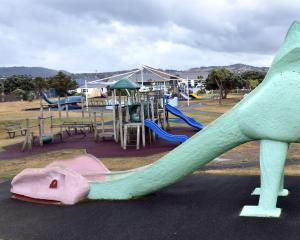A creative response to a growing roll has proved a success for the Dunedin Rudolf Steiner School.
Three Mongolian yurts were erected on the Maia school site in 2008.
At $20,000 each, the portable, felt-covered, wood lattice-framed structures used by nomads in Central Asia were an innovative way to provide more classroom space for the growing state-integrated school.
As fundraising allowed, one of the yurts was replaced with a permanent structure last year, with the yurt sold to someone in Motueka.
Executive officer Clare Ridout said the school intended to replace the remaining yurts in future years as the "five year life-span of a yurt is about right".
Despite being unconventional, and the only yurts she knew of being used in a New Zealand school, they had proved a good option.
"The only drawback is we are probably a wetter environment than Mongolia, so we had to do some extra water-proofing," she said.
When the remaining yurts were removed, they would be missed.
Principal Rachel Barrington described them as an "adventure".
"People do like to come and see them and prospective parents get excited rather than worried.
"For children to experience a real Mongolian yurt is pretty special and the natural light and round shape make them peaceful places to teach," she said.
The school now had 45 pupils and the kindergarten 50, and remained in a period of growth and consolidation.
A new kindergarten in Pine Hill, and five play groups, were expected to add to the school roll in future years.
Mrs Barrington said Rudolf Steiner education was becoming more popular as "people are wanting more of a holistic approach and less of the materialism".
"We have a different way of teaching which is child-centred. We are educating the whole child."












